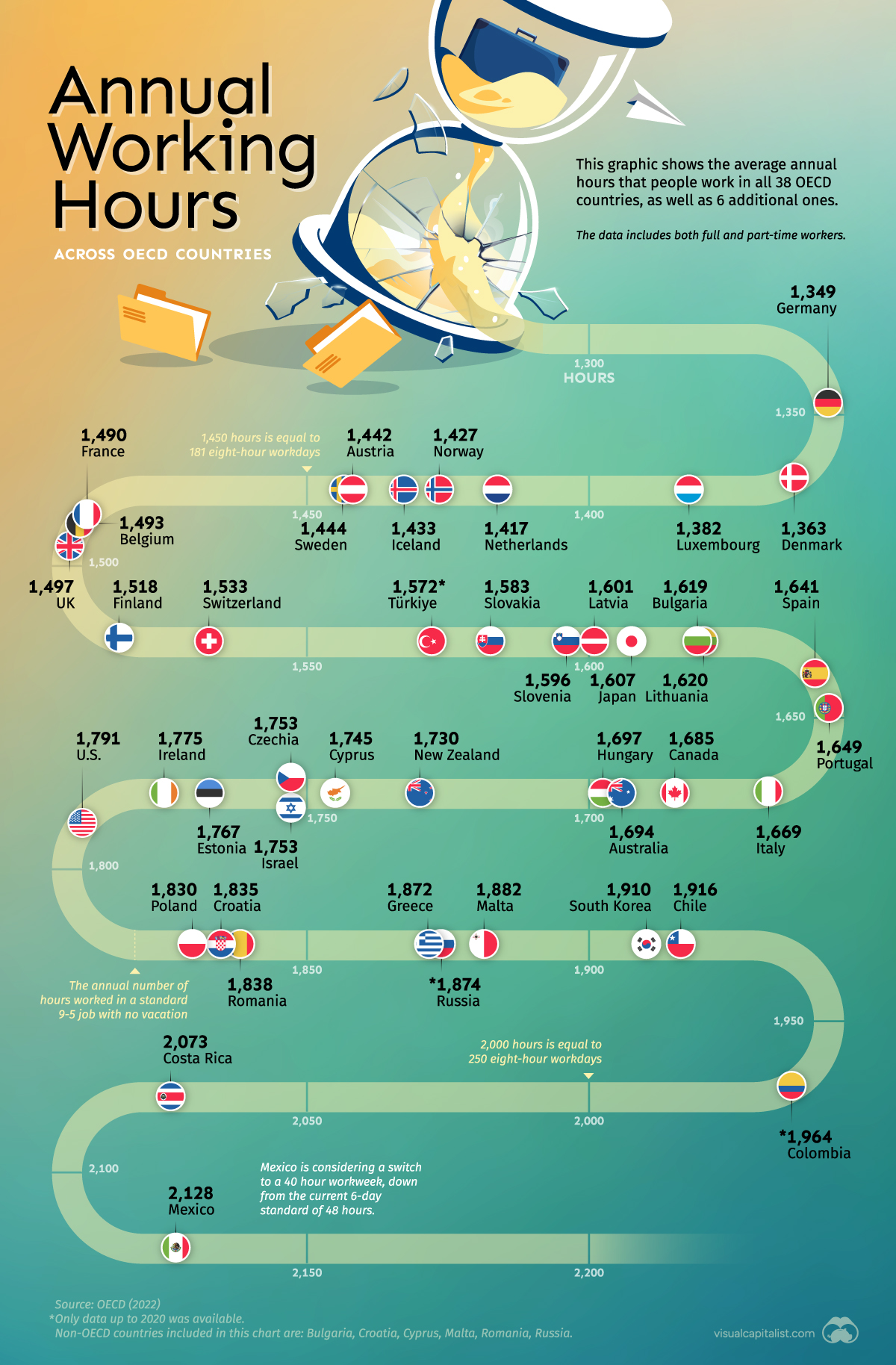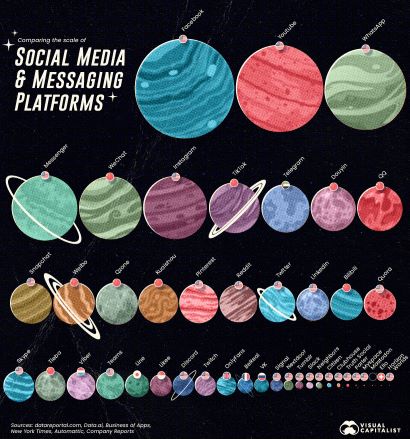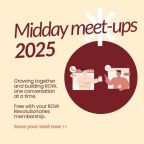One of the big challenges for those responsible for wellbeing is figuring out how to communicate data effectively. ROW tuned into a webinar by Jeff Desjardins, founder of Visual Capitalist, to get the lowdown on how data storytelling can cut through the noise and turn data into a compelling call to action.
We’re drowning in data. By 2025, we’ll have created more information than in all of human history combined — it’s mind-boggling. But here’s the problem: our ability to process and make sense of this flood hasn’t kept pace.
Jeff Desjardins, founder of the American data publishing company Visual Capitalist, recently shared his thoughts on the weight of data and the power of storytelling in a webinar titled Data Storytelling: What Organisations Need to Know Going Into 2025.
In his talk, he unpacked the challenges of modern data communication and shared practical tips to help organisations tell better, more meaningful stories with their data.
For teams working on everything from employee engagement to health and safety statistics, there’s plenty of data worth sharing — but it has to be compelling to cut through the noise. Think wellbeing metrics like burnout rates or EAP usage, DEI insights on representation or pay equity, and even external benchmarks to compare your organisation’s progress against industry standards.
When done well, data storytelling grabs attention, builds trust, and drives action. But done badly? It can feel overwhelming, confusing, or worse — harmful.
If you haven’t come across Visual Capitalist, it’s one of the world’s fastest-growing digital publishers, attracting 8 million visitors monthly.
Since its founding in 2011, the platform has focused on making complex information more accessible through data-driven, visual storytelling. Its work has been featured in major outlets such as Forbes, The Wall Street Journal, and The New York Times.

So what’s the problem?
We live in an information age. But it’s more than that - it’s an age of overload.
"Every three years, data is actually doubling. And so what that means is that in the next three years there's going to be more data created than in all of human history up until this point," Desjardins says.
This rapid growth creates a major challenge for people and for organisations. Put simply, we can't process this much information as humans.
The sheer volume of data has led to a situation where platforms, algorithms, and artificial intelligence largely determine what information reaches us. But this automated curation comes with its own problems.
"We don't get to see all the data, we don't actually get to see all the content and information, we get to see what's chosen for us," Desjardins says.
As part of the talk, he introduced the concept of power law dynamics in data consumption, explaining that typically only 20% of data (the 'tall head') gets shared, processed, and understood, while 80% (the 'long tail') is left behind due to time constraints or “it’s not interesting.”
Desjardins shares how data is largely sorted today:
He says this filtered view can lead to echo chambers, confirmation bias, and a distorted understanding of the bigger picture. And it’s not just social media or search engines where this happens - Desjardins points out that even in corporate environments, tools like Slack, Teams, and email contribute to this sorting.
From a workplace wellbeing perspective, research shows this overload presents several challenges, including health misinformation, difficulty gaining senior leader buy-in, and limited time and cognitive resources for processing information.
This can hinder decision-making and lead to the spread of low-quality or contradictory information. Additionally, tools like email, with their constant influx of messages, can cause important information to get lost.
Desjardins noted that content creators often play into these flaws - reverse-engineering their content to exploit these tendencies, which only worsens the information overload.
Desjardins shares how we, as humans, amplify the problem:
On top of data overload, there is also a widespread lack of trust in institutions. Desjardins says that only 16% of people trust big business to act in the public’s best interest. This trust gap adds another layer of difficulty for organisations trying to effectively communicate important information.
In this information-saturated world, trust is crucial for effective communication.
"There are basically two currencies that you have in an information ecosystem where you're trying to communicate data to someone," Desjardins says, referencing influential marketer Seth Godin.
"There's attention and there's trust."
In a bid to be heard above the noise in a crowded market, Desjardins says many organisations have prioritised attention over trust. This has led to a significant drop in public confidence.
"Global trust is at all-time lows or near all-time lows for many institutions relevant to this conversation." He highlights how organisations often face the temptation to sacrifice trust in pursuit of attention - a strategy that tends to backfire.
"Trading attention for trust is really easy. Getting attention and sacrificing trust is really easy. Doing it the other way is really hard because trust builds up really slowly over a long period of time."
FIVE WAYS to Tell Better Data Stories AT WORK
At ROW, and in our conversations with many of you, we’ve seen just how overwhelming information overload can be. And when it comes to employee wellbeing, it becomes even trickier, especially with the various opinions and biases people bring to the table about its importance at work.
So, how do you break through the noise, capture attention, and build trust all at once?
Desjardins says effective data storytelling can make a big difference.
Based on Visual Capitalist's experience, Desjardins offers practical advice for how you could improve data storytelling within your organisation:
Long, detailed reports are losing their effectiveness in the digital age.
Desjardins suggests, "You want to create little chunks of it that you can use to capture people's eyeballs and then get them interested in the wider report."
By breaking up large pieces of content into smaller, standalone data stories, you can engage your audience more effectively. Repurposing content across different platforms ensures your insights reach a wider audience through various formats, helping you meet your audience where they are.
Before diving into data storytelling, it’s essential to define the purpose of your communication.
Desjardins says, “What is the goal that you're looking to achieve and what is the actual hook that you're looking to get someone's capture their attention with?”
Understanding your objective and identifying the key insights in your data will ensure that your message resonates. Similarly, understanding your audience’s knowledge is crucial.
Desjardins refers to the "insight sweet spot," explaining, “You're not telling them something they already know, but you're also not completely disrupting their entire belief system." This balance is key to engaging your audience without overwhelming them.
Given that a large portion of content is now consumed on mobile devices, optimising your data visualisations for smaller screens is critical. “Starting in 2021, 76% of Visual Capitalist's traffic was mobile,” Desjardins says.
In addition, consider accessibility when designing your visuals. He recommends simplifying visuals by removing unnecessary elements and considering colour choices, especially for those with colour blindness, to ensure your visuals are accessible to all.
Simplicity is key to effective data storytelling. Desjardins says, "Don't do anything gimmicky."
To convey your message, select the right visual techniques. Desjardins suggests three powerful approaches:
- Narrative: Turn data into a compelling story by adding context and human elements.
- Qualitative framework: Organise limited data with categories, icons, and quotes, presenting information in digestible chunks for easy understanding.
- Visual metaphors: Relate data to familiar concepts, making abstract information easier to grasp. As an example, in one graphic, Visual Capitalist compared the scale of social media to planets, shown below.
Be creative, Desjardins advises.
He recommends borrowing from existing visualisations but with a twist: “The key is to adapt and make the concept your own,” ensuring your content resonates with your audience in a way that feels fresh and relevant.
Don’t hesitate to draw inspiration from others, but ensure that it aligns with your organisation’s unique message and audience.
Wrapping up
When it comes to wellbeing messages, telling a good data story is more crucial than ever. With all the noise and shrinking attention spans, key insights are often at risk of getting lost. But by taking a page out of Desjardins’ playbook - keeping things simple, being transparent, and using visuals that hit the mark - you can make sure your message sticks.
For wellbeing initiatives, it’s not just about presenting numbers; it’s about using the data you already have to tell a story that’s relatable and accessible.
When organisations apply these strategies, they’ll be better positioned to cut through the noise, build trust, and inspire action - helping to drive real change in how they look after their people in 2025 and beyond.
Want to read more?
Sign in below if you're a Revolutionary (member).
Not a member yet?
Join in seconds! Just $10/month (+ any tax).
Cancel anytime.
Be a revolutionary and join now












